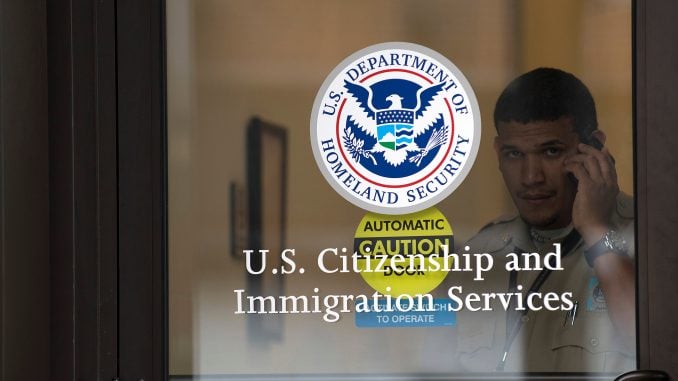
WASHINGTON, D.C. The White House says it is working closely with federal agencies on new immigration guidelines to make sure they stand up to legal scrutiny in the wake of outcry over an executive order signed last month. President Donald Trump is expected to present another travel order later this week with a more targeted approach to vetting visitors from seven countries that the U.S. State Department has listed as “countries of concern” for in the war on terrorism.The White House offered guidelines Tuesday that address some of the finer details of an immigration plan in which almost all illegal immigrants will be considered subject to deportation. However, protections will remain in place for immigrants known as “dreamers” who entered the country illegally as children, according to official guidelines released on Tuesday.The Department of Homeland Security guidance to immigration agents is part of a broader plan for border security and immigration enforcement in executive orders that Trump signed on Jan. 25.Former President Barack Obama issued an executive order in 2012 that protected 750,000 immigrants who had been brought into the United States illegally by their parents. Trump has said the issue is “very difficult” for him.The Republican president campaigned on a pledge to get tougher on the estimated 11 million illegal immigrants in the United States, playing on fears of violent crime while promising to build a wall on the border with Mexico and to stop potential terrorists from entering the country.DHS officials, speaking on a conference call with reporters, said that although any immigrant in the country illegally could be deported, the agency will prioritize those deemed as posing a threat. These include recent entrants, those convicted of a crime and people charged but not convicted.Many of the instructions will not be implemented immediately because they depend on Congress, a public comment period or negotiations with other nations, the officials said. Mexican immigration officials immediately objected to part of the new rules.The guidance also calls for the hiring of 10,000 more U.S. Immigration and Customs (ICE) agents and 5,000 more U.S. Customs and Border Protection (CBP) agents.The DHS will need to publish a notice in the Federal Register subject to review in order to implement one part of the plan that calls on ICE agents to increase the number of immigrants who are not given a hearing before being deported.The new rules would subject immigrants who cannot show they have been in the country for more than two years to “expedited removal.” Currently, only migrants apprehended near the border who cannot show they have been in the country more than 14 days are subject to rapid removal.The memos also instructs ICE to detain migrants who are awaiting a court decision on whether they will be deported or granted relief, such as asylum. DHS officials said they are reviewing what jurisdictions may have laws in place that prevent the amount of time immigrants can be held.The agency also plans to send non-Mexican migrants crossing the southern U.S. border back into Mexico as they await a decision on their case. The DHS officials said this plan would be dependent on partnerships with the Mexican government and would not be implemented overnight.An official with Mexico’s immigration department said it is “impossible for the United States to send deported or repatriated Central Americans to Mexico” because of existing treaties between the United States and Mexico.The guidelines were released a day before U.S. Secretary of State Rex Tillerson and Homeland Security Secretary John Kelly were due in Mexico City for talks with President Enrique Pena Nieto and Mexican officials.Trump’s planned measures against illegal immigrants have drawn protests, such as an event last week that activists called “A Day Without Immigrants” to highlight the importance of the foreign-born, who account for 13 percent of the U.S. population, or more than 40 million naturalized American citizens.N.C.’s lawmakers are also working on immigration plans, including Senator Thom Tillis and Congressman David Rouzer of Johnston County. The two joined a Congressional delegation tour of the U.S.-Mexico border on Monday and Tuesday. They were given a tour of the border and were briefed on law enforcement’s strategy to improving public safety, and ensuring the flow of legitimate trade and travel through ports of entry.



